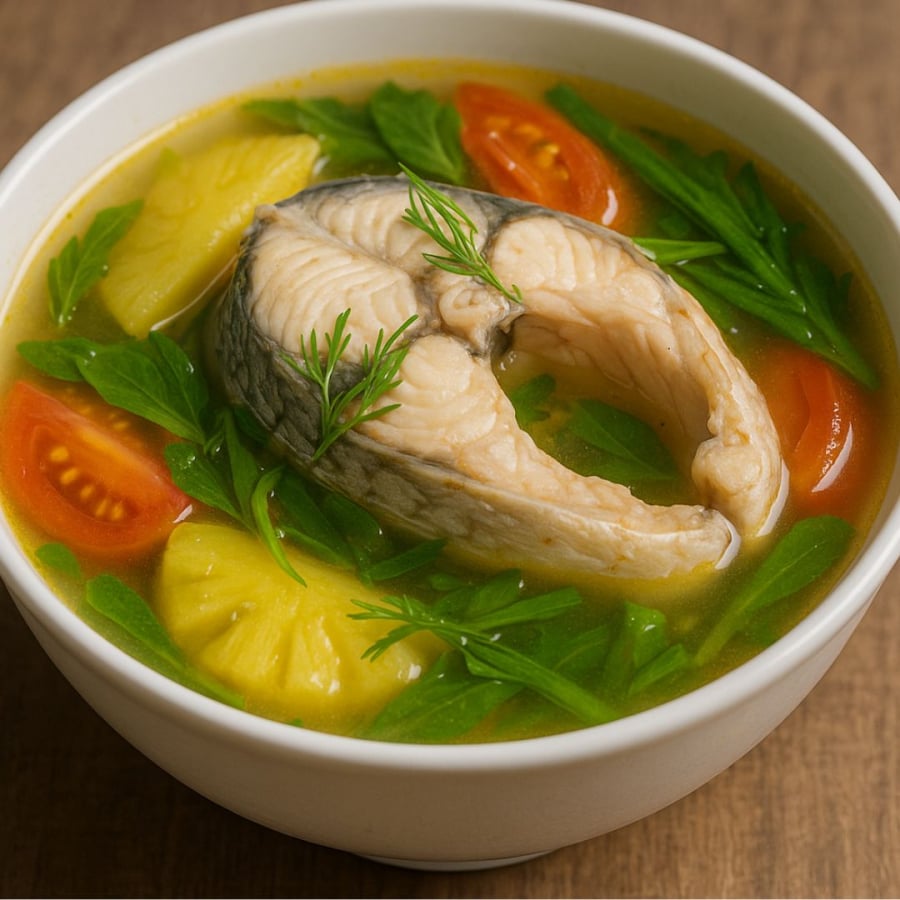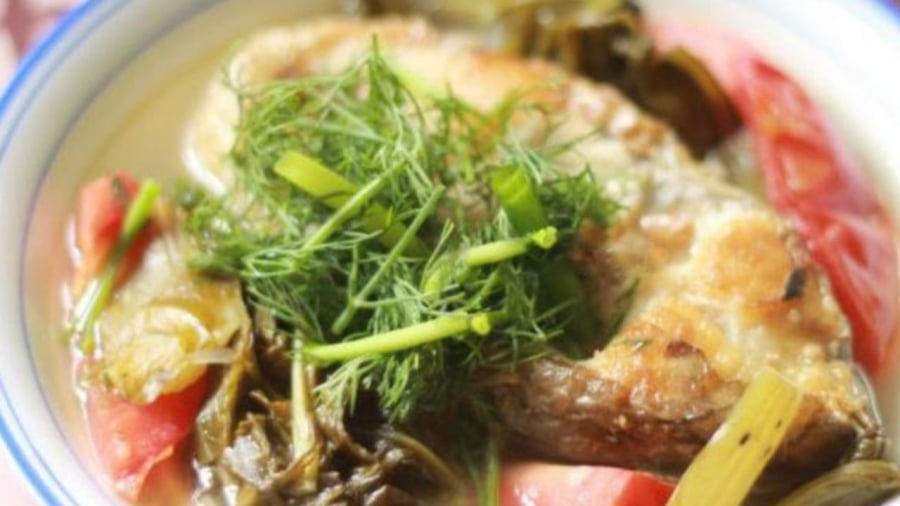Master the Art of Cooking Fish Soup: Secrets to a Delicious, Crystal Clear, and Aromatic Dish
In the culinary culture of Vietnam, fish soup holds a special place. Beyond its delicious taste and nutritional value, fish soup is renowned for its ability to counteract the greasiness of fried and stir-fried dishes. Across the regions of Vietnam, each locality has developed its unique take on this soup, contributing to its richness and appeal. Nonetheless, the hallmarks of a delectable fish soup remain consistent: absence of fishy odor, crystal clear broth, tender yet firm fish meat, and a captivating aroma.
1. Selecting fresh fish and proper preprocessing – the fundamental factors:
The foundation of a mouthwatering fish soup lies in choosing fresh fish. Characteristics of fresh fish include clear eyes, bright red gills, firm flesh, and the absence of a mushy texture. It is advisable to refrain from using fish that has been dead for an extended period or emits an unusual odor, as these tend to undergo protein breakdown, resulting in a potent fishy smell.

When feasible, opt for fish sourced from rivers or natural habitats rather than those raised on industrial feed. Wild-caught fish tend to have a milder flavor, with firmer and sweeter meat.
During preprocessing, ensure you diligently perform the following steps:
- Scrape off the scales, and remove the gills and internal organs.
- Scrape away the dark membrane inside the belly, as it harbors the strongest odor.
- Trim the fins and tail for a clearer broth.
- Wash the fish with coarse salt, white liquor, or crushed ginger to effectively neutralize the fishy smell.
Once cleaned, you may marinate the fish lightly with a combination of salt, pepper, and fish sauce to enhance its flavor and aroma during cooking.
2. Always use boiling water for cooking fish – a subtle trick for a clear and odorless broth:
A common mistake many cooks make is placing the fish in cold water from the outset. This approach allows the fish to cook slowly, causing amino compounds and fatty acids to dissolve into the water, resulting in a strong fishy odor.
The correct method is to wait for the water to reach a rolling boil before introducing the fish. When exposed to high temperatures, the fish’s exterior will instantly contract, retaining its sweetness while significantly reducing any fishy aroma. Should you need to add water during cooking, always use boiling water to avoid “heat shock,” which can cause the fish to turn mushy and regain its fishy smell.

3. Cook over medium heat, without covering – preserving the natural aroma and color:
After adding the fish to the boiling water, wait for the water to return to a boil before reducing the heat to a gentle simmer. Cooking the fish over medium heat ensures even cooking, resulting in tender yet firm meat.
Notably, refrain from covering the pot during the cooking process. Keeping the lid off allows the fishy odor to dissipate, while simultaneously maintaining the clarity of the broth and the vibrant color of the vegetables. Covering the pot traps the fishy odor inside, impacting the flavor and causing the broth to turn cloudy.
4. Seasoning with herbs and spices at the right moment – the essence of fish soup:
Herbs and spices play a pivotal role in neutralizing fishiness and enhancing the flavor of the soup. Depending on your taste preferences and regional cooking style, you can creatively select from a variety of options:
For fish soup with mustard greens or rice paddy herb: Add a few slices of ginger, scallions, or dill to counteract the fishy odor and impart a subtle fragrance.
For sour fish soup in the style of Northern and Central Vietnam: Incorporate sour ingredients such as green mango, star fruit, pineapple, young tamarind leaves, and a touch of fresh chili to elevate the flavor.
For Southern-style fish soup: Introduce rice paddy herb and long coriander, imparting a distinctive aroma and a refreshing taste.
Note: Herbs should be added right after turning off the heat. Give them a quick stir, and then ladle the soup into bowls. Adding herbs too early or allowing the soup to cool before serving can cause the herbs to discolor, lose their aroma, and intensify any fishy odor.

5. Should the fish be fried before making the soup?
Some cooks prefer to pan-fry the fish briefly before making the soup to neutralize the fishy odor and enhance the flavor. During frying, the fish’s skin contracts, reducing the release of fishy compounds and creating an enticing aroma. However, this method also increases the soup’s greasiness and may, at times, make it overly rich.
If you favor a light and refreshing taste, cooking fresh fish directly in the soup is recommended. On the other hand, if you prefer a more robust and aromatic dish, lightly frying the fish beforehand is a sensible choice – just be sure to use minimal oil and avoid frying for too long.
The secret to a perfect bowl of fish soup:
- Start with fresh fish and preprocess it thoroughly.
- Cook with boiling water and maintain a steady temperature.
- Avoid covering the pot during cooking.
- Use medium heat to prevent the fish from disintegrating.
- Season with herbs and spices at the right moment.
With a touch of finesse and patience, you’ll effortlessly master the art of cooking fish soup, resulting in a fragrant, non-fishy dish that enriches your daily family meals.









